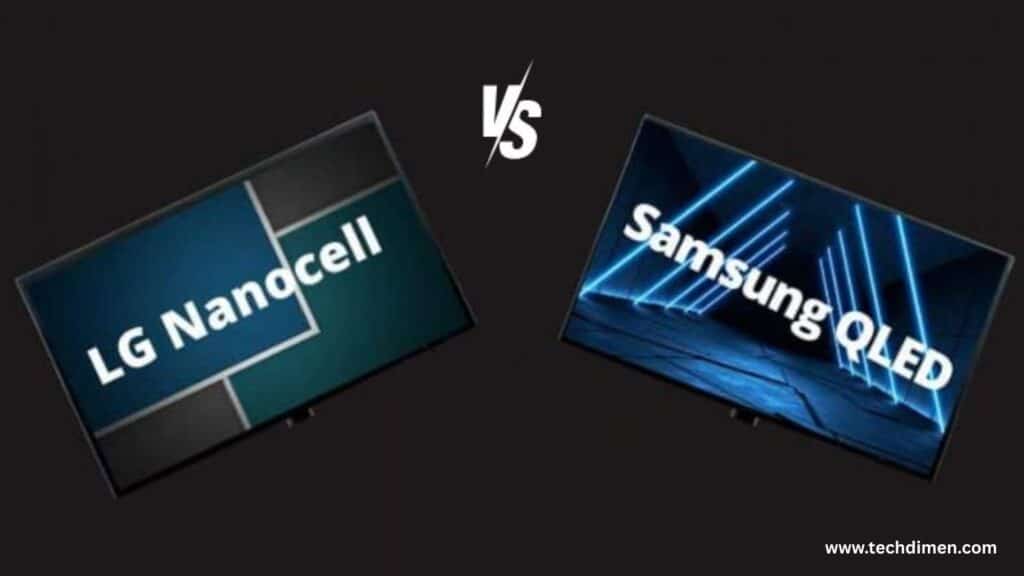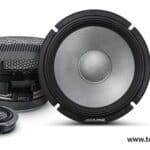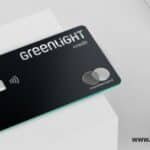When shopping for a new TV, you’re likely to encounter a battle between two major display technologies: NanoCell vs QLED. These terms are more than just marketing buzzwords. They represent distinct technologies developed by LG and Samsung respectively, each aiming to deliver stunning picture quality, vibrant color reproduction, and immersive viewing angles.
In this deep dive TV comparison, we’ll explore how NanoCell and QLED truly differ, what powers them under the hood, and whether there’s something better than both. This isn’t fluff. It’s a technical, practical, and this world breakdown that helps you decide which screen lights up your living room better.
the Core Technology
NanoCell displays use a special nanoparticle layer applied to the LCD panel. These nanoparticles filter out dull colors and enhance the color spectrum. NanoCell filters out impure light wavelengths to boost color accuracy. Most NanoCell TVs use IPS (In Plane Switching) panels, known for better viewing angles. IPS panels aren’t as bright as VA panels used in QLED TVs, but they provide consistent colors off angle. This technology is part of LG’s proprietary technology, marketed as Nano Color, and is designed to elevate visual standards on mid-range LCD TVs.
Samsung QLED TVs use a Quantum Dot layer that sits between the LED backlight and the LCD screen. These quantum dots are tiny particles that emit pure red and green colors when hit by a blue light source. This quantum dot technology boosts color fidelity, extending the range and vibrancy of colors. Most QLEDs use VA panels, which deliver superior contrast and black levels. Their higher brightness makes QLEDs ideal for well lit environments and HDR content. This advanced television technology offers better brightness contrast, a wider HDR color space, and sharp image clarity.
Panel & Backlight Differences That Actually Matter
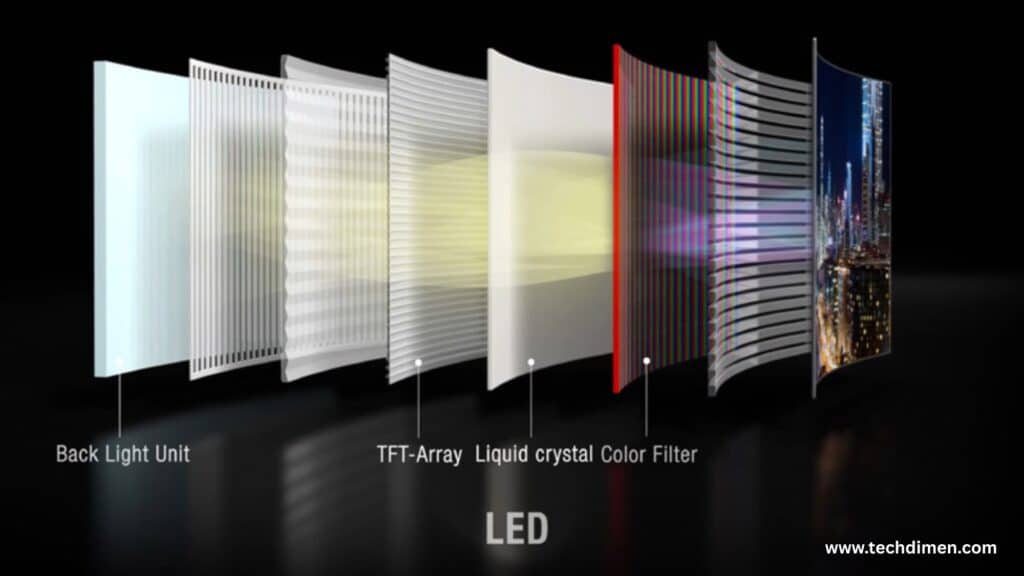
One major difference between NanoCell and QLED lies in their screen backlighting methods. While both are technically LCD TVs, their backlight systems can vary significantly.
LG NanoCell typically uses edge lit or full array local dimming (FALD) backlighting, with fewer dimming zones. This setup results in moderate contrast performance and limited local dimming in budget models. Samsung QLED, on the other hand, may employ edge lit, FALD, or even Mini LED backlighting, especially in its premium lineup. These offer more dimming zones and deliver excellent contrast with stronger local dimming capabilities.
Color volume and accuracy are other crucial areas where QLED tends to outperform. NanoCell TVs usually cover around 85 to 90 percent of the DCI-P3 color space and provide high color accuracy. However, QLED TVs reach closer to 95 to 100 percent of the DCI-P3 standard and offer very high color accuracy. The use of quantum dots allows QLED TVs to produce deeper reds and greens, enhancing overall color purity.
In terms of brightness and contrast,What is Better Than NanoCell vs QLED generally perform better. Higher brightness levels mean better HDR performance, more impactful highlights, and stronger color depth. NanoCell TVs tend to have a flatter contrast profile, particularly in dark room settings. QLED’s contrast advantage stems from both its panel type and more advanced illumination methods.
Viewing Angles, Reflections, and Room Type
NanoCell TVs excel in viewing angles thanks to their IPS panels. This makes them ideal for rooms with wide seating arrangements or for watching with family and friends. However, these panels often fall short in producing deep blacks, resulting in a somewhat grayish tone during dark scenes.
QLED TVs use VA panels that offer better contrast but narrower viewing angles. Samsung mitigates this limitation with Ultra Viewing Angle layers in its premium models. While QLEDs are best suited for darker rooms or direct viewing positions, they may suffer from color shifting or a loss of contrast when viewed from the side. That said, their higher peak brightness makes them better at handling reflections in brightly lit rooms.
Gaming Performance Showdown

What is Better Than NanoCell vs QLED cater well to gamers, especially in their newer models. LG NanoCell TVs typically deliver input lag around 10 milliseconds and support refresh rates up to 120Hz. Most models also include Variable Refresh Rate (VRR) and Auto Low Latency Mode (ALLM) on HDMI 2.1 ports. Samsung QLED TVs offer similar input lag, often around 9 to 11 milliseconds, and support the same gaming features. In addition, Samsung includes AMD FreeSync in several QLED models, giving them an extra edge for competitive gamers.
In terms of ports and compatibility, both brands support HDMI 2.1 in their mid to premium models. LG NanoCell may occasionally lag behind when it comes to firmware updates for advanced gaming features. If you’re gaming on a PS5, Xbox Series X, or high end gaming PC, Samsung QLED generally provides a more consistent experience.
Smart Features and OS Usability
LG NanoCell TVs run on webOS, offering a clean and responsive interface. This system includes built-in voice assistants such as Google Assistant and Alexa, and uses the Magic Remote for gesture based controls. Samsung QLED TVs operate on Tizen OS, which offers a more customizable layout and a stronger app ecosystem. Samsung’s SmartThings integration also provides a seamless way to control IoT devices in your home. While both platforms are efficient and user friendly, Tizen tends to offer smoother transitions between apps and a slightly more polished experience overall.
Durability and Burn In Risk
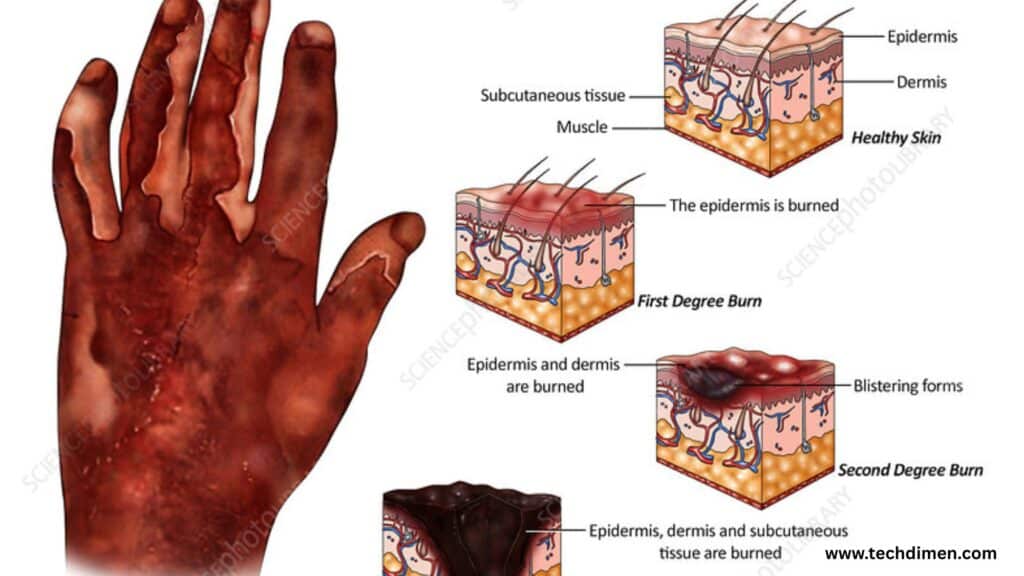
Both NanoCell and QLED TVs are based on LCD technology, which means burn in is not a concern as it is with OLED displays. NanoCell TVs generally have a lifespan of over 60,000 hours. QLED TVs benefit from the stability of their inorganic quantum dot layers, which are less prone to degradation over time. This gives QLED a small edge in terms of long term color output and reliability.
Price-to-Performance Ratio
NanoCell TVs often come at a lower price compared to similarly sized QLED models. In the budget range between 500 and 700 dollars, NanoCell TVs offer 4K HDR displays with 60Hz refresh rates and edge-lit backlighting. Samsung QLEDs in the same range may offer basic 4K capabilities but usually come with lower brightness. In the mid range segment from 800 to 1200 dollars, NanoCell TVs provide 120Hz refresh rates and local dimming, while QLEDs include full array backlighting, 120Hz support, and HDR10+ compatibility. Premium QLED models above 1300 dollars include Mini LED technology and offer superior brightness and contrast. If Dolby Vision is important, NanoCell is the better choice. For those prioritizing brightness and HDR10+, QLED has the advantage.
Beyond NanoCell vs QLED Is OLED or Mini LED Better?
OLED technology surpasses both NanoCell and QLED in contrast and picture accuracy. OLED displays offer true blacks through pixel level dimming and have superior viewing angles. They are especially strong in color fidelity, high dynamic range, and overall visual clarity. However, OLEDs are more expensive and carry the risk of burn in with static content.
Mini LED technology, now used in Samsung Neo QLED and LG QNED models, bridges the gap between OLED and traditional LED. Mini LEDs use thousands of smaller light sources to create more precise lighting and local dimming. This results in higher brightness, reduced blooming, and improved contrast compared to standard QLED or NanoCell TVs. Mini LED effectively combines the strengths of LCD backlight power with the precision of OLED like control.
Comparison Table: NanoCell vs QLED vs OLED vs Mini-LED
| Feature | NanoCell | QLED (Samsung) | OLED (LG, Sony) | Mini LED (Neo QLED/QNED) |
|---|---|---|---|---|
| Panel Type | IPS LCD | VA LCD | Self emissive OLED | VA or IPS LCD |
| Backlighting | Edge lit / FALD | Edge lit / FALD / Mini-LED | None (self-lit pixels) | Mini LED |
| Viewing Angles | Wide | Moderate | Excellent | Moderate to Wide |
| Brightness | Moderate | High | Moderate | Very High |
| Color Accuracy | Good | Excellent | Excellent | Excellent |
| HDR Performance | Decent | Very Good (HDR10+) | Excellent (Dolby Vision) | Excellent (HDR10+/DV) |
| Burn in Risk | None | None | Possible | None |
| Price Range | Budget to Mid-range | Mid-range to Premium | Premium | Mid range to Premium |
| Ideal Use Case | Wide seating, Budget TV | Bright rooms, Gaming | Cinematic, Dark rooms | Balanced Bright + HDR |
NanoCell vs QLED: Which One is Better for You?
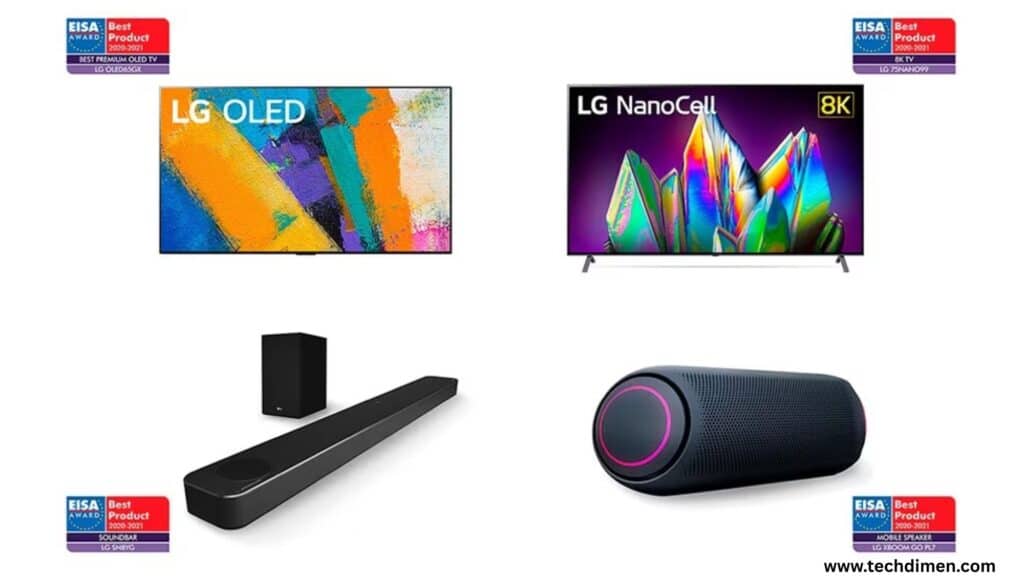
Your choice between NanoCell and QLED should depend on your specific use-case. If you have a wide seating arrangement and care about viewing angles, NanoCell is the better option. If your room has a lot of natural light, QLED’s higher brightness will be more effective. For budget-conscious shoppers, NanoCell offers more affordable models. If Dolby Vision is essential to your viewing experience, NanoCell supports it, whereas Samsung QLED does not. For gamers, both options are strong, but QLED tends to offer more consistent support for the latest features.
If your top priorities are picture quality and HDR color space, QLED generally has the upper hand. On the other hand, if you value price, Dolby Vision, or broader viewing angles, NanoCell presents a better value proposition.
fAQs
Can OLED TVs outperform both NanoCell and QLED?
Yes, OLED TVs deliver deeper blacks, perfect contrast, and pixel level dimming. They’re superior in color accuracy, viewing angles, and HDR performance. However, they are more expensive and can suffer from image retention over time.
What makes Mini LED a better option?
Mini LED TVs use thousands of smaller LEDs to achieve better local dimming and higher brightness than standard QLED or NanoCell TVs. They provide excellent contrast, enhanced backlight control, and reduced blooming. Mini LED is commonly found in premium Samsung Neo QLED and LG QNED models.
Which is better for bright rooms: NanoCell or QLED?
QLED is better suited for bright environments due to its higher brightness and contrast levels. Its VA panel and quantum dot technology help maintain image clarity even under strong ambient lighting.
Are NanoCell TVs good for wide viewing angles?
Yes, NanoCell TVs use IPS panels that retain color accuracy and consistency at wider angles. This makes them ideal for large families or living rooms with spread-out seating.
Do QLED TVs offer better gaming performance?
Generally, yes. Samsung QLED TVs often come with features like AMD FreeSync, faster response times, and consistent support for HDMI 2.1, VRR, and ALLM. These features enhance the gaming experience, especially on next-gen consoles.
Which TV has better color reproduction?
QLED TVs outperform NanoCell when it comes to color reproduction due to their quantum dot layer. They achieve wider color gamut and greater color fidelity, especially in reds and greens.
Does NanoCell support Dolby Vision?
Yes, most LG NanoCell TVs support Dolby Vision, providing dynamic HDR with enhanced color and brightness scene by scene. Samsung QLED TVs, on the other hand, use HDR10+.
Is there a risk of burn in with NanoCell or QLED TVs?
No, both NanoCell and QLED are LCD based technologies and are not susceptible to permanent burn-in like OLED panels.
Which is more budget-friendly: QLED or NanoCell?
NanoCell TVs are generally more affordable than QLEDs. They offer solid performance for the price, making them a great choice for budget conscious shoppers.
Is there a definitive winner between NanoCell and QLED?
Not universally. QLED offers better brightness, color accuracy, and HDR performance. NanoCell provides better viewing angles and price value. The right choice depends on your room conditions, usage preferences, and budget.r viewing angles, making them suitable for group watching and wider living room setups.
Final Thoughts
Both NanoCell and QLED offer significant improvements over standard LED TVs. QLED stands out in color purity, contrast, and brightness, making it a better choice for most viewers who want vivid and dynamic visuals. NanoCell, meanwhile, excels in color accuracy, price, and angle visibility, making it an excellent choice for those who often watch TV with others in a wide seating setup.
If you’re seeking the best overall performance and are open to investing more, technologies like Mini-LED and OLED now represent the top tier in television technology. These newer options offer better local dimming, higher screen resolution, and enhanced color fidelity, making them strong contenders against both NanoCell and QLED.

Jhon AJS is a tech enthusiast and author at Tech Dimen, where he explores the latest trends in technology and TV dimensions. With a passion for simplifying complex topics, Jhon aims to make tech accessible and engaging for readers of all levels.

